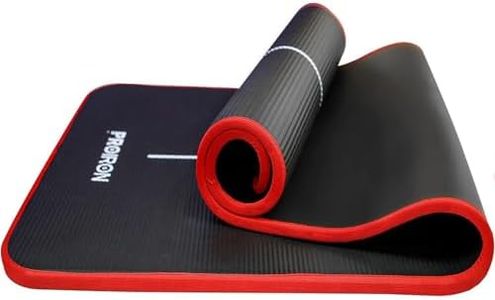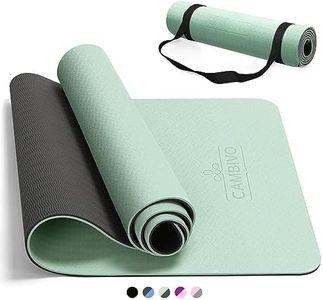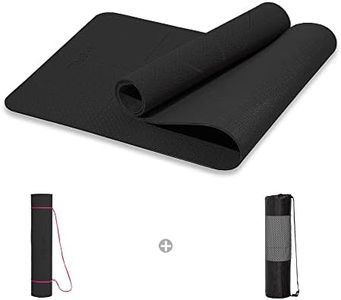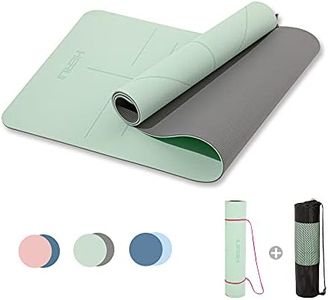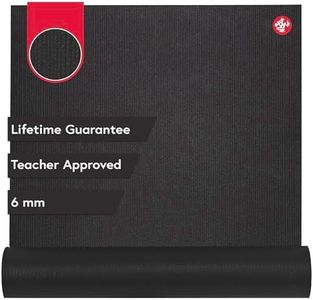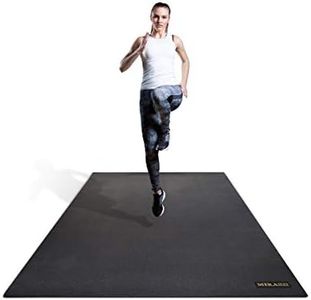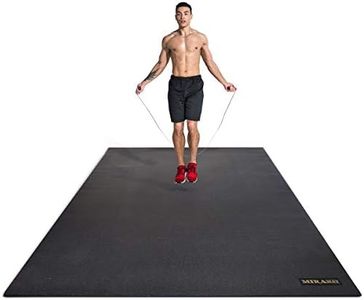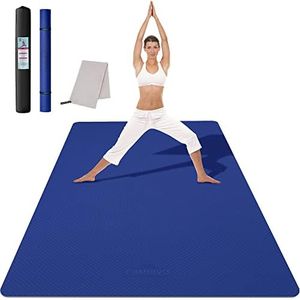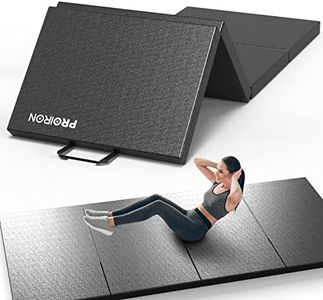We Use CookiesWe use cookies to enhance the security, performance,
functionality and for analytical and promotional activities. By continuing to browse this site you
are agreeing to our privacy policy
10 Best Exercise Mats
From leading brands and best sellers available on the web.Buying Guide for the Best Exercise Mats
Choosing the right exercise mat is important because it can affect your comfort, safety, and the effectiveness of your workout. Whether you're practicing yoga, pilates, stretching, or bodyweight exercises, the right mat can provide the support and stability you need. Your perfect mat depends on the type of exercises you do, how much cushioning you prefer, and where you’ll use the mat. Paying attention to key features will help you select a mat that matches your needs and makes exercising more enjoyable.ThicknessThickness refers to how much cushioning the mat provides. Thicker mats (around 10-15mm or more) offer more comfort and joint protection, which is great if you have sensitive knees or plan to do floor exercises like sit-ups. Standard mats (about 6mm) balance comfort with stability and are suited for most types of workouts. Thinner mats (3-5mm) are preferred for balance-focused workouts like yoga because they help you feel more connected to the floor. Choose thicker mats for high-impact or joint-sensitive routines, and thinner mats for stability-focused or standing exercises.
MaterialThe material affects durability, grip, and the eco-friendliness of the mat. Common materials include PVC (durable and sticky but not eco-friendly), TPE (a more eco-conscious synthetic choice), and natural rubber or cotton (environmentally friendly and often grippy). Some materials are softer or more flexible, while others add weight and durability. If you have allergies, consider hypoallergenic materials. Assess your needs—if you want something long-lasting and easy to clean, synthetic options like PVC or TPE might be best. If you prioritize eco-friendliness, go for natural options.
Texture and GripTexture is what gives your mat its grip. Some mats have a smooth feel, while others have a raised, patterned texture for extra traction. A good grip is crucial for preventing slipping, especially in sweaty conditions or if you do dynamic movements. If you tend to sweat more or do hot yoga, look for textured or sticky mats for safety. Smoother mats work for low-impact or slow-paced routines where traction is less critical. Try feeling different textures, if possible, to choose what feels most stable under your feet and hands.
SizeExercise mats come in various lengths and widths. Standard mats are about 68 inches (173 cm) long, but longer or wider mats are available for taller individuals or those who want more space to move. Choose a length where your whole body fits comfortably while lying down. Extra-wide or long mats are helpful for larger persons or if you do exercises that require more space, like pilates. If you plan to take your mat to classes, consider how easily you can carry a bigger size.
PortabilityPortability is determined by the mat’s weight and its ability to roll or fold up. Lightweight and foldable mats are easier to transport and store, ideal for people who travel with their mat or take it to various locations. Heavier, extra-thick mats are usually less portable but offer more comfort at home. Think about how often you’ll move your mat—the more you carry it, the more you’ll appreciate a lightweight option with a carrying strap.
Ease of CleaningExercise mats need to be cleaned frequently and easily, especially if you use them regularly or in shared spaces. Some mats are machine-washable, while others need to be wiped down with spray. Mats with closed-cell surfaces resist absorbing sweat and are easier to wipe clean, whereas open-cell mats may need more maintenance. If hygiene is important to you, consider how much effort each mat type requires to stay fresh.
